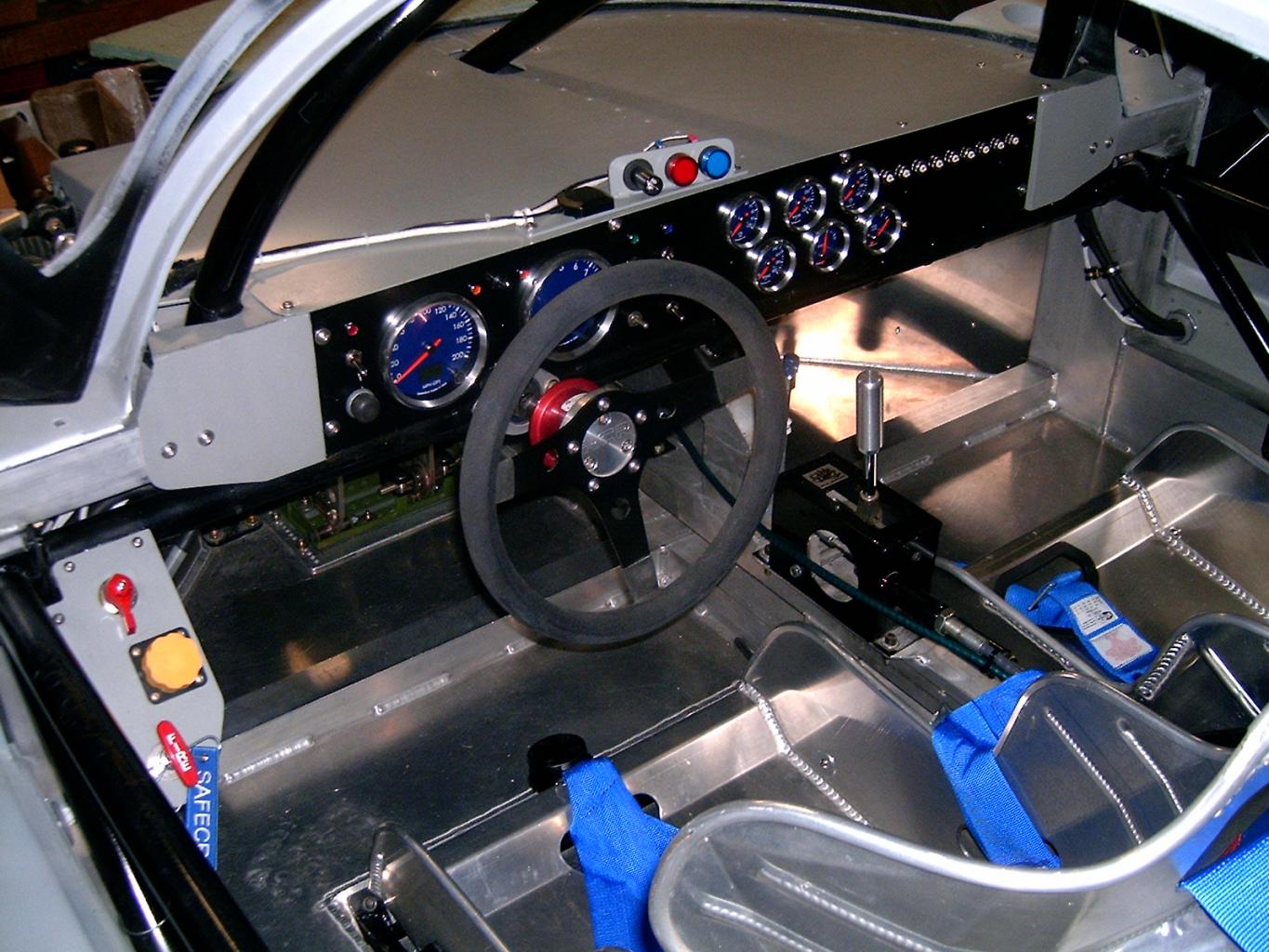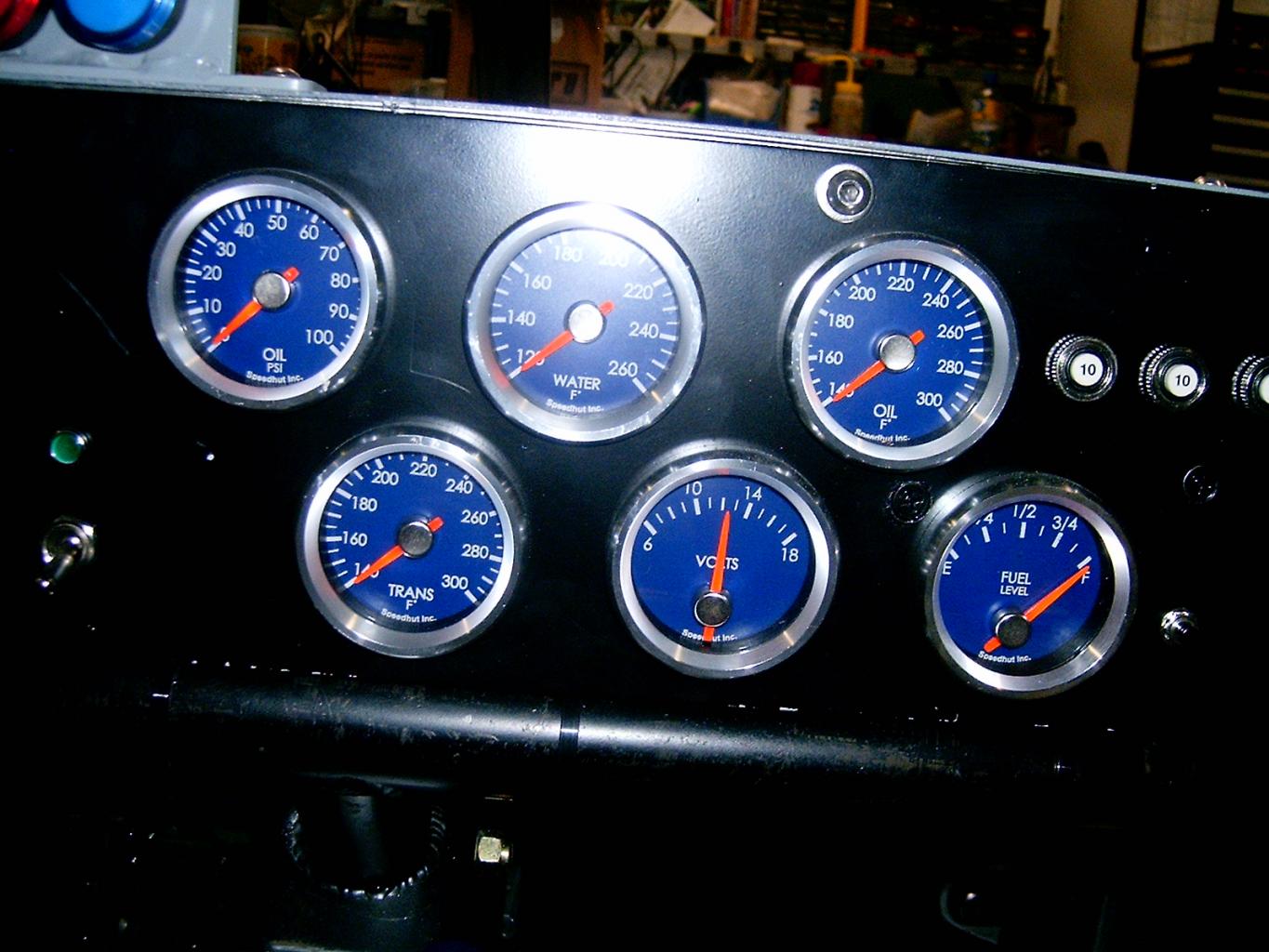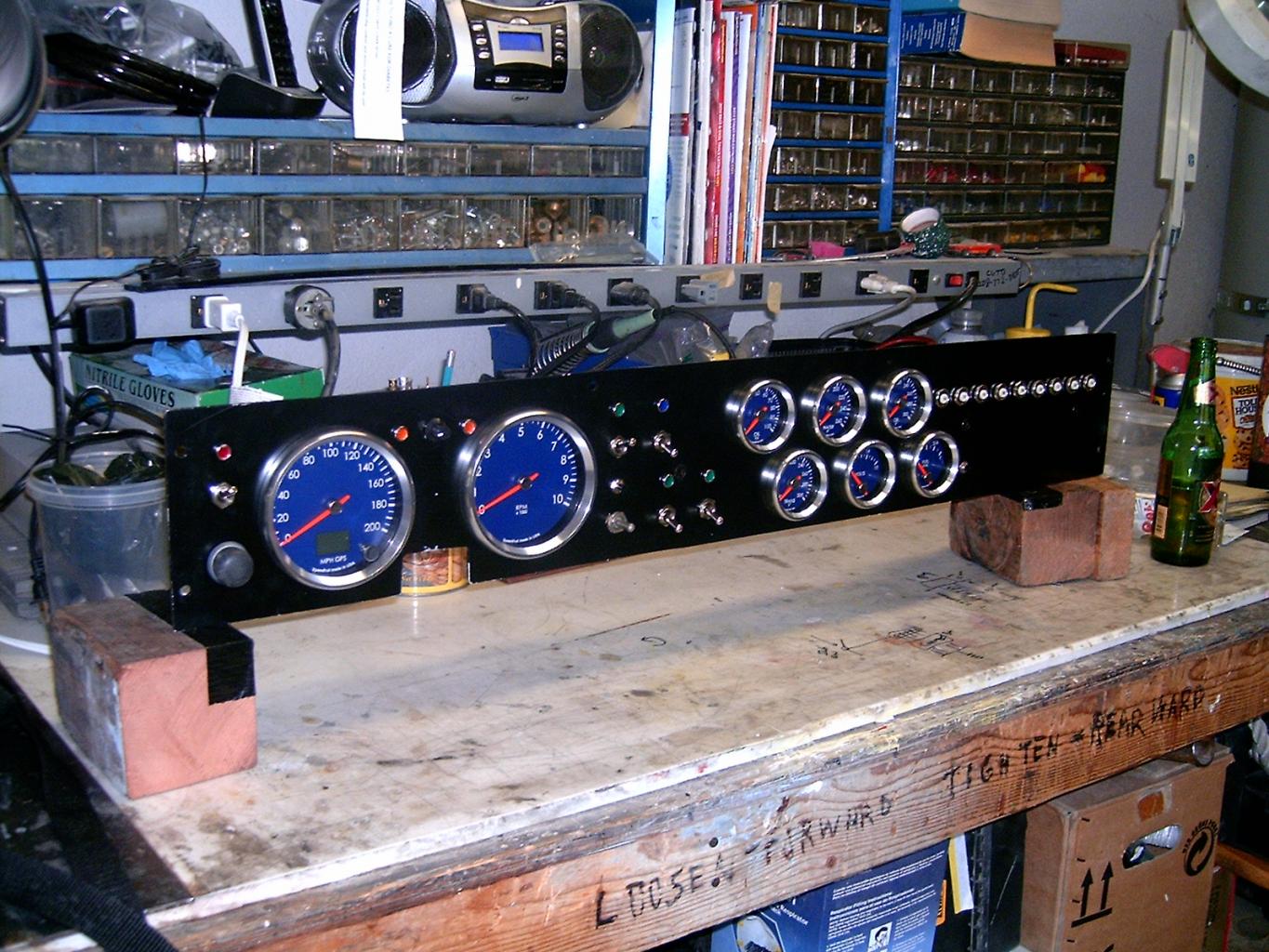Overview
Over the years, there have been two different gauge sets provided in the SL-C kit: DigiDash and Koso.
DigiDash
All of the early cars (until late 2011) cars had the original DigiDash, an all-in-one unit that had a digital display for either speed or RPM, shift lights, and various other parameters. The DigiDash also was capable of being upgraded to a GPS receiver for more accurate lap timing than the optional IR reader. The DigiDash is available in several different variations, and because of its ability to track laptimes with an optional IR reader, is more of a track-focused instrument. However, it does not have an analog tachometer, and the engine speed display is not graphical, and so is hard to track, especially with a fast-revving engine.
It's important to note that there are two different DigiDash models and that either can use the GPS receiver. The DigiDash Lite is the base model and the DigiDash Pro+ uses a similar display and also includes an extensive data logger.
A product of ETB Instruments in the UK, more details can be found at their website.
Galek Motorsports Racing is the US Agent for ETB.
Koso RX-2N
Current cars are shipped with the Koso RX-2N, a gauge set with a large analog 10,000 RPM tach, a digital speedometer, odometer, and display of other parameters like fuel level, and temps, as well as over speed, over temperature and other warnings or alerts. The Koso RX-2N is shown here
Technical Details
The DigiDash unit has a traditional swinging-arm fuel sender, and the Koso uses a capacitance-based tube-type sender with no moving parts. The fuel level sender provided with the kit when the Koso instrument is shipped is specific to the Koso, and to the unique tank shape in the SL-C. Do not interchange these sensors, or modify the provided Koso sender. The Koso sender must be mounted on the top of the tank, and the bottom of the tube must not touch the tank. The DigiDash sender can be side-mounted, or mounted on the top of the tank.
Both gauges will work with popular V8s, 4 cylinders, and other popular engines.
The Koso wiring manual can be downloaded here: Kosomanual.pdf
The Koso gauge set is designed to be used with the standard InfinityWire system, and the SL-C specific harness provided in that kit is designed to be used with the Koso gauge, though the InfinityWire system and harness can also be adapted to the Digidash if so desired.
Senders and Connection for the Koso Gauge
The Koso comes with senders for water temp and oil temp. Use these, and don't try to piggyback on the GM sensors- you just mess up both systems. For fuel level, use the Centroid sender that comes with the car kit.
When using the Centroid fuel level sender with the Koso, be sure to connect the send signal from the Centroid to the Koso through a relay that is powered by switched 12v. If you don’t, the fuel level may read inaccurately, typically always Full. In many cases, wiring the Send signal from the sender directly to the Koso will work for a while, then mysteriously stop working; The solution is to wire it as specified here.
To install the Koso water temp sender on an LS engine, find the GM water temp sender on a cylinder head and note it's location. Now go to the other head, and remove the plug in the same location on that head (GM drills and taps both heads, but only one actually gets an installed sender, so there is always one that just needs to have the plug removed to be used to read water temp for aftermarket gauges.) Once the plug is removed, discard it. The Koso sender can be installed into the head with an adapter, or another sender can be obtained to go directly to the head, without an adapter. The Koso part number is BF120000, and is a sender with a M12 X 1.5 thread.
The oil temp sender can be installed in the same basic way- either use an adapter to a more typical 1/8" NPT, or just buy a new sender with a 1/8 NPT already there. The Koso part number for a temp sender with a 1/8 NPT is BF030000. If you don't have an available 1/8" NPT port, adapters are easy to find from the usual sources like eBay, Jegs, etc.
These new senders from Koso can be purchased on their website here.
Others
While these are the only factory-supplied gauges, the SL-C can be assembled with different options. A couple of builders are using gauges from Speedhut, and another is using (with a modified dash) gauges from still another vendor. However, alternate gauge sets will usually have additional fabrication needed, and the available real estate for fitting gauges is relatively small.
Another option is to use a computer-based solution, with an LCD screen, and OBD-sourced data from the engine ECM. An example of what can be done with this approach is shown here, in an application from Palmer Performance:
The example above shows how the app can display gauges in a format that mimics other existing cars, in this example, the Nissan GTR. In most cases, these gauges can be configured to read any stock PID reliably delivered by the OBD stream from the engine ECM. If this does not make sense to you, more info can be found at the Palmer Performance site.
Corvette C6 Cluster
One builder (Ken) integrated a Corvette C6 Cluster as outlined in his build here. He achieved this by using a C6 BCM, and the wiring harness from the Corvette-- instead of using the InfinityWire package that comes with the kit. He estimates that this will add at least 100 hours to the build assuming you're comfortable reading wiring diagrams and modifying a wiring harness.
This isn't a conversion for the faint of heart. The benefits are an OEM gauge cluster, cruise control, heads up display (HUD), etc. The disadvantages include the use of a used wiring harness from a wrecked car, a tremendous amount of work dieting the Corvette harness, and accounting for all the various sensors, plugs, etc that the BCM and harness require. You'll also have to interface the Corvette harness to the SL-C's steering column.
AIM Digital Dash
Recently (Spring 2015), AIM has come out with a pair of very cool integrated dashes. Available in 5" and 7" versions, the smaller one is a pretty good fit (with a little work on the binnacle) for the SL-C. The only real problems with these and similar gauges are the initial cost to actually install them (the gauges are expensive, starting at $2300, plus whatever other sensors are needed), and the lack of street-required things like odometers, high-beam indicators, etc. They are great for a track or race car, though.
Racepak IQ3S
Racepak has long been a player in digital gauges for racing, with their IQ series of gauges targeted at the low-to-mid-range race crowd. As of late 2015, they have released a version of the popular IQ3 series gauge that is targeted to the specific requirements of street cars. The new gauge has displays for turn signals, high beams, trip meter and odometer, as well as fuel level, making it a realistic choice for our cars. The IQ3S is available now, and a couple of SL-C builders are integrating it as of early 2016.
Though the ads say the fuel level is "programmable", only the full and empty values are actually able to be programmed, and as such, if you are using the stock fuel sender from the kit, the range from full to empty will not be linear, as you would expect. Still, it does sort of work with the stock SL-C fuel level sensor, if you can tolerate the inaccuracy from full to empty.
The IQ3s starts at around $1000, depending on what you want to do with sensors, how you want to connect it to the ECU, etc.
Like the others (except the Digidash) you may have to do some bodywork to the dash to get a perfect fit.
Galleries
Race Dashboard
Howard built a nice race dashboard (build thread here) using SpeedHut gauges.




